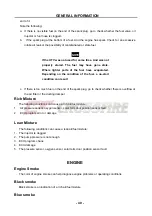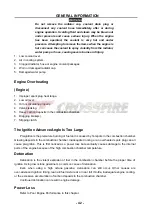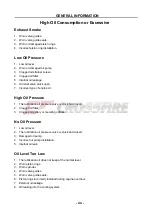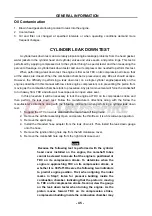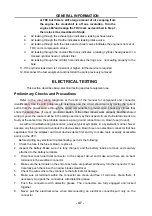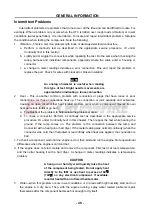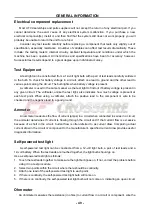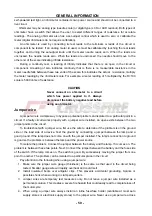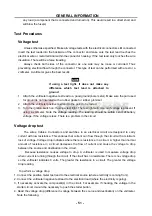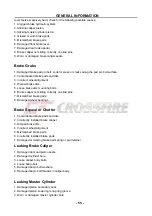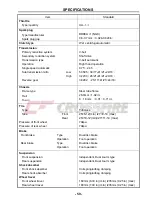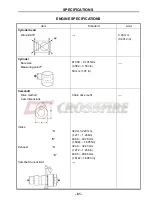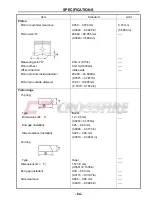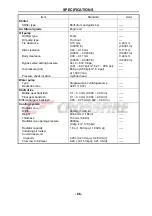
GENERAL INFORMATION
- 52 -
a. The voltmeter should indicate 0 volts. If there is a drop of 0.5 volts or more. There is a problem
within the circuit. A voltage drop reading of 12 volts indicates an open in the circuit.
b. A voltage drop of 1 or more volts indicates that a circuit has excessive resistance.
c. For example, consider a starting problem where the battery is fully charged but the starter motor
turns over slowly. Voltage drop would be the difference in the voltage at the batter (source) and
the voltage at the starter (destination) as the engine is being started (current is flowing through
the batter cables). A corroded battery cable would cause a high voltage drop (high resistance)
and slow engine cranking.
d. Common sources of voltage drop are loose or contaminated connectors and poor ground
connections.
Peak voltage test
Peak voltage tests check the voltage output of the ignition coil and ignition pulse generator at
normal cranking speed. These tests make it possible to identify ignition system problems quickly and
accurately.
Peak voltage tests require a peak voltage adapter or tester. See Chapter Ten, Ignition System
Testing.
Continuity Test
A continuity test is used to determine the integrity of a circuit, wire or component. A circuit has
continuity if it forms a complete circuit, that is, if there are no opens in either the electrical wires or
components within the circuit. A circuit with an open. On the other hand, has no continuity.
This type of test can be performed with a self-powered test light or an ohmmeter. An ohmmeter
gives the best results. If using an analog ohmmeter, calibrate the meter by touching the leads together
and turning the calibration knob until the meter reads zero.
1. Disconnect the negative battery cable.
2. Attach one test lead (test light or ohmmeter) to one end of the part of the circuit to be tested.
3. Attach the other test lead to the other end of the part or the circuit to be tested.
4. The self-powered test lead comes on if there is continuity. An ohmmeter reads 0 or very low
resistance if there is continuity. A reading of infinite resistance if there is continuity. A reading of
infinite resistance indicates no continuity, the circuit is open.
Testing for a short with a self-powered test light or ohmmeter
1. Disconnect the negative battery cable.
2. Remove the blown fuse.
3. Connect one test lead of the test light or ohmmeter to the load side (battery side) of the fuse terminal
in the starter relay.
4. Connect the other test lead to a good ground (bare metal). Make sure the part
used for a ground is
not insulated with a rubber gasket or rubber grommet.
5. With the self-powered test light or ohmmeter attached to the fuse terminal and ground, wiggle the
wiring harness relating to the suspect circuit at various intervals. Start next to the fuse terminals and
work away from the fuse terminal. Watch the self-powered test light or ohmmeter while progressing



